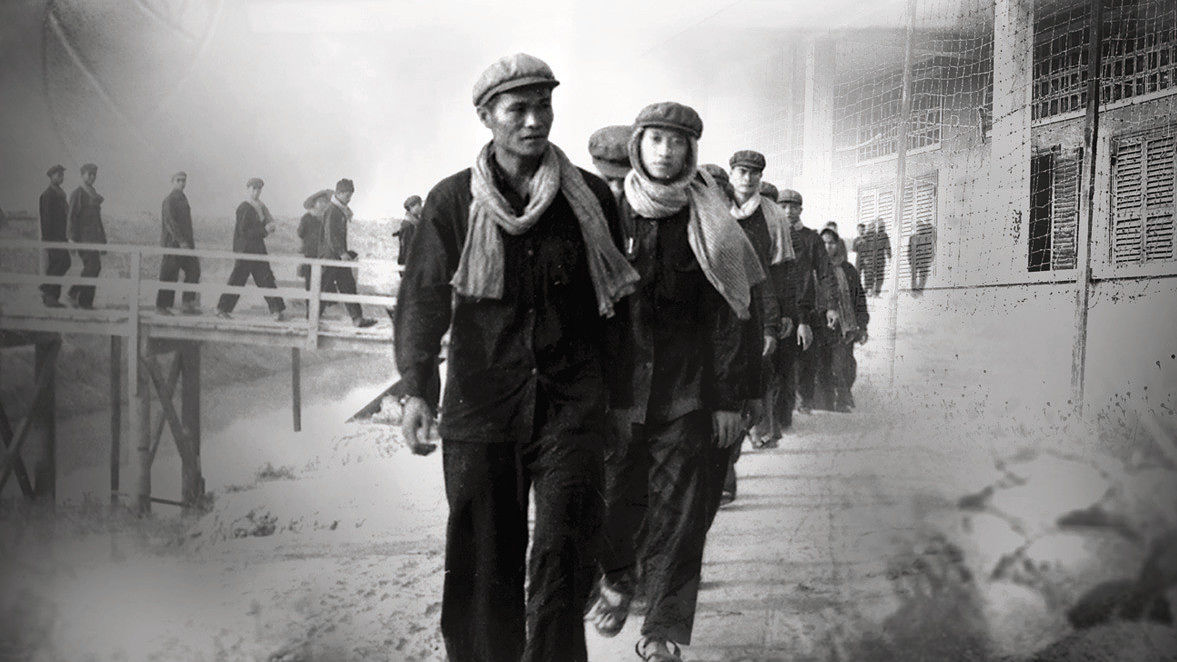By Chlotrudis Independent Film Society
Rating: 5 cats
Director: Rithy Panh

Original language title: Duch, le maître des forges de l'enfer
Country: cambodia, france
Year: 2013
Running time: 110
IMDB: http://www.imdb.com/title/tt1922589/combined
Kyle says: “DUCH, MASTER OF THE FORGES OF HELL was one of the features of the recent series titled ‘Old Ghosts, New Dreams: The Emerging Cambodian Cinema’ shown at the Film Society of Lincoln Center from April 19 to 25, 2013. The schedule on Wednesday April 24 offered two films connected historically, thematically and cinematically, since both are the work of director Rithy Panh. DUCH was preceded by S21: THE KHMER ROUGE DEATH MACHINE (2003). This cinema is not just emerging; it is literally being born again, as most historical documents of Cambodian culture were destroyed along with much of the population in the infamous Khmer Rouge purge that commenced in April 1975, when Cambodia became Democratic Kampuchea, resulting in the extermination of about 2 or 3 million of the 8 million population. The exact number is of course impossible to determine, but the methods of interrogation, torture, killing and corpse disposal are — due to the testimony of a few survivors and prison guards as well as numbingly detailed, wildly fabricated prison records maintained according to party doctrine and training.
“S21: THE KHMER ROUGE DEATH MACHINE inspired widespread comparisons to Claude Lanzmann’s SHOAH (1985) during its first public screening at the 2003 New York Film Festival. The Tuol Sleng High School in Phnom Penh — a place of learning — was converted into the S21 Detention Center — a place of torture and death. An artist named Vann Nath, who was S21’s official painter and one of a handful of survivors, revisits the building for the first time in two decades. We see him discussing his miraculous survival and painting scenes of horror from memory (artists whose work was met with disapproval were executed), confronting former guards regarding their behavior, and bearing witness to the hellish descent into barbarity of which humans are capable.
“It is impossible to declare which is more soul-wrenching: Former captors remembering the awful routines and retracing their steps in the small rooms of the school, like actors at a technical rehearsal — or the perfection of routines of ‘enhanced interrogation’ so as to keep victims alive until they were able to put their signature to a coerced confession and list of other traitors, at which time they were disposed of as soon as possible. It is axiomatic that if the Party arrested you, you were guilty, as was everyone in your family, including tiny children. Doctors were summoned to treat prisoners at the point of death from beatings, only to remand them to further torture when they were sufficiently improved. Of paramount importance was the prevention of suicide. One of the survivors points out that if each person who was interrogated and tortured supplied 50 or 60 names, whether they knew them or not, soon enough the entire population of Cambodia would have been killed. At the end we read that line repeated over and over again, throughout recorded history: ‘I did what I was told to do.’
“DUCH, MASTER OF THE FORGES OF HELL can be considered both companion piece and sequel to S21, since he is frequently mentioned in S21. His real name is Kaing Guek Eav, and he as the Khmer Rouge Party Secretary, in which capacity he administered two interrogation facilities between 1975 and 1979, blandly labeled M13 and S21. The strength of this documentary is that it is almost entirely composed of close-ups of Duch being interviewed by director Rithy Panh, nonchalantly spouting Communist Party dogma, explaining the necessity for such facilities in the name of state security, leafing through Photostats of documents explaining their meaning or pointing to his signature, looking right into the camera as he justifies without emotion the ‘loyalty’ and ‘dedication’ he brought to his job.
“One searches in vain for a glimmer of guilt or embarrassment, ultimately wondering what the facial expression of someone responsible for genocide of such magnitude will register. Occasionally he views footage from S21: THE KHMER ROUGE DEATH MACHINE and comments flatly on whether he recalls that person or document or death, once in a while even smiling wanly or disputing someone’s statement. Some of the tattered historical black-and-white TV footage inserted shows thousands of Cambodian workers toiling away, their resemblance to a colony of ants impossible to miss, or moving boulders from one location to another, comparison to a version of the Myth of Sisyphus coming to mind. Duch drily claims that he faced the same issue as everyone did — survival instead of death. ‘We destroyed the old world to build a new one.’ In February 2012, Duch was sentenced by a U.N. War Crimes Tribunal to life imprisonment for ‘shocking and heinous crimes.’ This is an essential document in the cinematic history of genocide. 5 cats”
